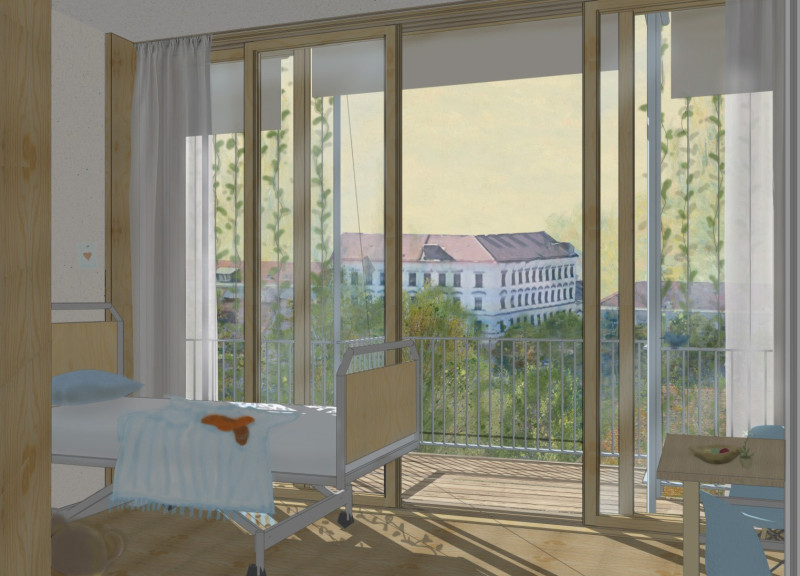5 key facts about this project
One notable feature of the Flexible Hospice is its emphasis on spatial organization and communal integration. The building comprises three floors, each designed with a flexible layout that can accommodate various patient care demands. Individual patient rooms are generously sized, incorporating large windows to maximize natural light and views of the surrounding landscape. This intentional design promotes a sense of openness and connection, both to nature and the wider community.
A defining characteristic of this project is its commitment to sustainability. The selection of materials, including wood, glass, and concrete, not only enhances aesthetic appeal but also supports environmental goals. The use of low-impact materials contributes to energy efficiency, while careful consideration of insulation materials ensures a comfortable indoor climate.
Unique features such as configurable patient rooms and communal areas reinforce the adaptable nature of the design. These spaces allow for easy modification in response to changing healthcare practices, ensuring the hospice remains relevant and functional over time. The integration of gardens and outdoor spaces further enhances this adaptability, inviting community engagement and promoting therapeutic activities outside the clinical setting.
Architectural plans facilitate a comprehensive understanding of the layout, while architectural sections illustrate how light and space interact within the structure. This design prioritizes both patient privacy and caregiver accessibility, striking a balance essential for a healthcare facility.
By exploring the architectural designs and ideas behind the Flexible Hospice, readers can gain deeper insights into its innovative approaches. The project not only meets current healthcare requirements but also anticipates future needs, making it a valuable reference in the discourse of modern healthcare architecture. For a more detailed examination of this project, including architectural plans and sections, consider delving into the full project presentation.


 Sophia Amelie Franziska Leopold
Sophia Amelie Franziska Leopold 




















